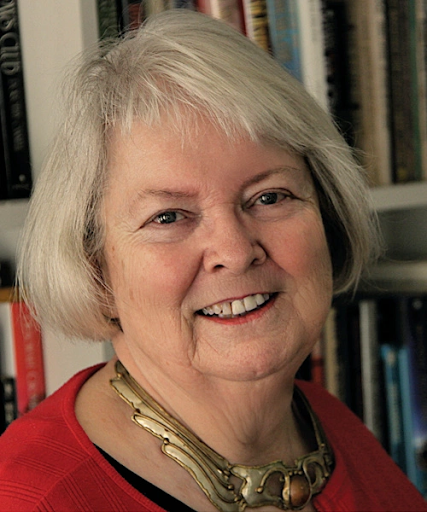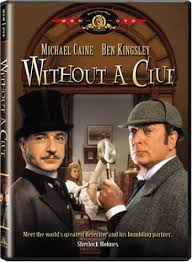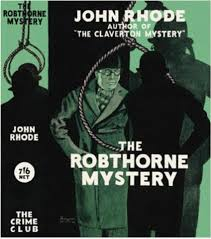Martin Edwards's Blog, page 78
March 4, 2021
Margaret Maron R.I.P.

I was extremely sorry to learn last week of the death of Margaret Maron, one of America's leading crime writers and someone whom I really enjoyed getting to know in recent years. Margaret's most famous novel is Bootlegger's Daughter, published in 1992, which won the Edgar, Anthony, Agatha, and Macavity awards - wow! This was the first book in the Deborah Knott series, which ultimately ran to twenty titles.
Before that success, however, she'd written a series featuring the NYPD cop Sigrid Harald. I first became aware of Margaret's name when the early Harald titles were published in the UK n the mid-80s. As I've mentioned, this was a time when I was studying newly emerging crime writers in an attempt to figure out their methods, and Margaret was one of the American writers I looked at. I enjoyed the Harald books and found them instructive. So much so that, as I told Margaret years later, much to her amusement, one of her storylines sparked an idea for a sub-plot (albeit so different that I'm not sure she saw the connection even after she read the book!) in Yesterday's Papers.
I first met Margaret at Malice Domestic in 2005, when she kindly inscribed for me a couple of collections of her excellent short stories, published by Crippen & Landru, but I got to know her better in more recent times, when I was able to attend US conventions more regularly. She was an engaging companion as well as a very entertaining and highly intelligent writer.
Three years ago, Margaret was kind enough to give Gallows Court a very generous endorsement, and I was hugely grateful. I was shocked as well as saddened to hear that she'd died following a stroke, but her books live on and so do memories of a very likeable woman.
March 2, 2021
Without a Clue - 1988 - film review

The expectations we bring to a film or a book often shape our reaction to it. Perhaps they shouldn't. I approached Without a Clue without much enthusiasm, I must say. I'd read one or two lukewarm reviews and the idea of a comedy film about Sherlock Holmes didn't excite me. However. the film turned out to be more enjoyable than I'd expected. Conversely, if I'd watched it to admire two fine actors (Michael Caine and Ben Kingsley) tackling a strong mystery, I'd have been disappointed.
The basic premise is that it is Dr Watson, not Holmes, who is the Great Detective. Sherlock Holmes is a stooge, played by an actor called Kincaid whom Watson has hired so that detective work does not interfere with his medical practice. But Watson has now become jealous of his own creation. He wants to dispose of Holmes and star in a series about the cases of 'the Crime Doctor' (was this a nod to the Crime Doctor stories of Conan Doyle's brother-in-law E.W. Hornung, I wonder?)
Caine and Kingsley play Holmes and Watson with considerable gusto, and this helps to keep the story swimming along, despite a mystery plot that I found less than gripping. Their investigations bring them into contact with a beautiful young woman (Lysette Anthony) and at one point they visit the Lake District - hooray! In due course it emerges that the criminal scheme they are trying to fathom is the work of Professor Moriarty (Paul Freeman, another very capable actor). There's even a small part for Peter Cook.
The story rolls along in a good-natured if rather protracted way, accompanied by a soundtrack written by Henry Mancini. The premise deserved a stronger screenplay, but overall the film exceeded my admittedly modest expectations.
March 1, 2021
The Writing Life - Thinking Alike
I was interested the other day to receive an email from a fellow writer whom I've known for many years. He'd spotted my mention on this blog of an idea I had about a story concerning book cover art, and said that the same idea had been running around in his own mind for a while. He and I share a number of literary enthusiasms, but our writing styles are very different, and I'm sure that if we ever do write these stories, they will be entirely distinct from each other. (A practical example of this occurred when John Dickson Carr and Clayton Rawson set about writing 'impossible crime' stories with an identical premise, and came up with two entertaining mysteries that were undoubtedly very different from each other.)
This contact came only a week or so after I read a manuscript of a novel which is due to be published this year. The author and his publisher had asked me for an endorsement, which I was more than happy to provide. I did gulp, though, when the early pages of the book suggested that he'd had the same idea as the notion I've come up with for one of the sub-plots of my current work-in-progress. Both of us have thought about a particular Golden Age trope. Aaaaagh! I was rather relieved, to say the least, when I read on and discovered that what he'd done with the basic concept was entirely different from what I have in mind.
These experiences simply reinforce a belief I've had for many years. Perhaps it applies with particular force to stories which are strongly plotted. Writers come up with similar ideas time and again. To the outsider, it may seem odd, especially in cases where the coincidence is striking. One famous example is the similarity that Nicholas Blake's A Penknife in My Heart bore to Patricia Highsmith's Strangers on a Train. Another is the similarity that P.D. James' Original Sin bore to Blake's End of Chapter. In those cases, there may well have been an element of subconscious borrowing, especially given that the books were published years apart, but I don't think there was any intention to borrow, or even pay conscious homage. And it's quite possible that even these examples of notable similarities were entirely coincidental. After all, the idea in Strangers on a Train had actually been employed by others long before Highsmith's book was published.
So the same ideas may come to mind years apart, and seem quite fresh and original. As I joked the other day, a story I wrote as a child had the same starting point - a Christmas mystery at a Northumberland country house where a detective has a family connection with that house - as Ann Cleeves' latest bestseller. Quite often, though, ideas spring to several authors' minds at roughly the same time, sparked by current events or a particular story in the news. The drying-up of a lake or reservoir in the north of England some years ago inspired a number of different crime novels by British writers.
One of those books was written by Reginald Hill, who also happened to be at work on The Stranger House, a stand-alone set in the Lake District at the time that I began my own Lake District stories. We were in regular touch in those days, but we didn't discuss our current writing, and so we didn't know we were both venturing on to the same geographical ground. (I must say that a Lake District series by Reg would have been fantastic, though at the time I did breathe another sigh of relief when he told me he didn't want to write one!)
Something of the kind can also happen with non-fiction, and there it is sometimes more problematic. I can think of three non-fiction book proposals, each very different from the others, which I sent out in the 1990s to particular publishers who, I thought, would be ideal for that particular volume. In the end, none of them came to fruition, because in each case someone more eminent than me had put forward a similar proposal. One galling example was an idea that was accepted by a UK publisher only to be quashed when a US subsidiary bought an alternative version of the same idea.
But these things happen - you just have to write them off to experience. And when I came to reflect later on, it seemed to me that despite the frustration, the exercises hadn't been a waste of time. At least the fact that writers more eminent than me were thinking on the same lines indicated that I was in the right area, coming up with ideas that were potentially attractive and saleable. And that was reassuring.
February 26, 2021
Forgotten Book - The Robthorne Mystery

The Robthorne Mystery was first published in 1934, when its author, John Rhode, was at the peak of his powers. He was a popular member of the Detection Club and an exceptionally prolific writer who had already established other punning pen-names such as Miles Burton and Cecil Waye; his real name was Cecil Street. Dr Priestley, who appears in the Rhode titles, was unquestionably in the tradition of the Great Detective. Because he was so productive, Rhode's quality control suffered intermittent failures, but The Robthorne Mystery is one of the most enjoyable of his books - at least among those I've come across (quite a few, but there are still upwards of one hundred to go!)
Recently I was fortunate enough (thanks to a generous tip from Clint Stacey) to acquire the copy of this novel that was originally in the Detection Club's own library. After reading the book, I went back to see if Dorothy L. Sayers had reviewed it (yes, I did collect and edit her reviews, but there were far, far more of them than I can recall). Her reactions seem to have been broadly similar to my own, although the title of the novel wasn't memorable enough in her opinion. We discover early on that this story involves identical twins, and when one of them dies, the twist is foreseeable. Except that Rhode does something rather crafty with this hoary old plot device.
Rhode was, above all, an ideas man. His writing was competent but undistinguished and the same can be said of his settings (in this case, an English village). I presume that his method of composition was to come up with a cunning trick and then build his story around it. Sometimes there was more than one trick. This approach can have disconcerting results, especially as regards story structure and shifting viewpoints.
Here, for instance, a sudden death occurs and is investigated - and then the case seems to be closed. Even Dr Priestley seems to give up. Curious, the reader thinks: perhaps it really was suicide rather than murder after all? We then jump to a related scenario, in which the glimmerings of a motive for murder seem to emerge. But Rhode has more developments up his sleeve...
When all is eventually revealed, I was left thinking that the culprit's behaviour when faced with an admittedly serious threat wasn't entirely convincing. Rhode wasn't much interested in the psychology of crime, and this book illustrates why that can be a weakness. Overall, however, I felt that he kept the story moving along entertainingly from start to finish. He was aiming to write light escapist fiction and this book achieves that objective very nicely.
February 24, 2021
Cast a Dark Shadow - 1955 - film review
Cast a Dark Shadow is sometimes referred to as a British film noir. I don't think that's an illuminating description. Really, it's an example of domestic suspense. The screenplay by John Cresswell is based on a play, Murder Mistaken, by Janet Green. Cresswell wrote for film and TV for about twenty years from the start of the 50s and he does quite a good job of disguising the essential staginess of the story. Janet Green was a talented writer, best known for films such as Sapphire and Victim, which dealt with significant social issues.
Cast a Dark Shadow is an unpretentious murder story which has a particularly good plot twist that lifts it a little out of the ordinary. The film was directed by Lewis Gilbert, who would later direct three Bond movies among other things. The cast is above average, with Dirk Bogarde playing an odious young rogue who rejoices in the name 'Teddy' Bare. He is well supported by Margaret Lockwood - a major star whose career was on the rocks at the time this film was released - Kay Walsh, Robert Flemyng, and Kathleen Harrison (playing a housekeeper of quite astonishing, but convenient, stupidity).
Teddy marries a much older woman for money, and then kills her to prevent her making a will which will devise much of her estate to her sister. However, Teddy - who prides himself on his cleverness - is himself rather stupid and his murder actually has an effect very different from the one he intended. Undaunted, he gets to know a wealthy widow (Lockwood, in an uncharacteristic role which she handles with verve) and they get married. But then Teddy becomes interested in yet another woman...
This is an entertaining little movie. The music is by Antony Hopkins who later become a well-known radio presenter; I once attended a talk by him in the mid-70s, an occasion which I remember pretty well. The singer Lita Roza - remembered for 'How Much is that Doggie in the Window?' - appears in the film and sings a song; this contributes nothing to the story, but reflects a gimmick common in movies at that time. One other bit of trivia - the play was novelised in 1953 by Green in collaboration with Leonard 'Arsenal Stadium Mystery' Gribble.
The Chase - 1946 film review
The Chase is a drab title for a film based on a book with a rather better title - The Black Path of Fear. But it's by no means a drab film, even if it is undeniably noir. I read the novel aeons ago when I was going through a real Cornell Woolrich phase, and although I can't recall much about it, I'm pretty sure that the film is very different. And it's certainly unusual.
We begin with Chuck Scott, clearly down on his luck and unable to afford breakfast. He's popping some pills, but it's not clear what's wrong with him. Then he finds a wallet on the ground and it's stuffed with cash. He buys breakfast but then heads off to the mansion which is home to the wallet's owner. This proves to be a rich guy called Roman, who is clearly a psychopath. Roman has a sidekick called Gino, played by Peter Lorre with characteristic sleazy menace. But when Roman offers Chuck a job as a driver, it's an offer too good to refuse.
Roman and Gino cross swords with a businessman who has outsmarted them, and manage to imprison him in the wine cellar, together with a hungry and vicious dog. Meanwhile, Roman's glamorous wife, clearly unhappy, keeps asking Chuck to drive her to a lonely coastline. She wants to escape to Cuba and offers Chuck $1000 to take her there. But then strange things begin to happen....
I don't want to spoil the story, which offers an intriguing take on psychological disturbance. Suffice to say that the narrative takes a very disconcerting course. I'm not sure this is entirely successful, but my attention was held throughout. Some aspects of the film are unsatisfactory - the music, for instance, struck me as over-the-top and occasionally irritating. The censors probably toned the film down to its detriment, but it retains an uncanny appeal.
The Silent Partner - 1978 film review
Gould plays Miles Cullen, a bank teller who works alongside Julie Carver (York). Unsurprisingly, he fancies Julie, but she is having a rather desultory affair with the bank manager. When Miles realises that someone dressed up as Santa Claus is planning to rob the bank, he craftily arranges things so that the robber gets away with small change, while he keeps the money supposedly stolen. The snag is that the villain he has cheated (Harry Reikle, played by Plummer) is a violent psychopath, who is determined to take revenge on Miles as well as getting his money back.
Miles contrives Reikle's arrest on another charge, and although his attempt to seduce Julie doesn't end well, he finds comfort in the company of another beautiful and adoring young woman, Elaine (Celine Lomez). But is Elaine all that she seems?
Although Julie's part is under-written, with the result that York, a terrific actor, is given some rather banal dialogue, this is a twisty and entertaining film, with one or two shocking moments of violence. Plummer is excellent - as usual - and Gould, an actor whom I find a bit erratic, is on good form here. I'm surprised this film isn't better known. I enjoyed it, and I'm keen to read the book to see how different (or similar) it is.
Three Novels On The Horizon
This week came an announcement that gave me a lot of pleasure. I've signed a deal with Head of Zeus to publish two more books set in the 1930s, taking forward the mysterious career of Rachel Savernake and her not entirely reliable sidekick Jacob Flint. I'm hugely committed to these books. Writing them is so rewarding. The reaction from reviewers and readers has been fantastic.
When I wrote Gallows Court, I was nervous about the response because although I wanted to write a twisty thriller with a difference, I was conscious that it was very different from, say, a conventional Golden Age pastiche. There is definitely a Gothic flavour to these stories. The same is true, though not quite in the same way, with Mortmain Hall. True originality is rare (I'll talk about this on the blog next week) but I do think these books are not quite like anything else on the market. Of course that carries some risks - this type of writing is not to everyone's taste, but it seems to have appealed to a lot of people, definitely at the top end of my hopes, let alone my expectations.
One positive consequence of lockdown is that I've been able to crack on with the next book in the series. In between lockdowns one and two, I did quite a bit of location research, when such a thing was possible, and very enjoyable it proved. The new book (which may be called Blackstone Fell, rather than Darkstone Falls as announced - we'll see...) is again an attempt to do something unusual with the classic crime story. I think it likely that this book will be published early next year, with Sepulchre Street to follow in 2023.
What of this year? Well, I'm delighted to say that in June, Allison & Busby will publish the eighth and latest Lake District Mystery, The Crooked Shore. The US edition from Poisoned Pen Press will follow at a later date. It's quite a few years since The Dungeon House appeared, and I think the break has done me and the series a great deal of good. The Crooked Shore takes the lives of Hannah and Daniel a stage further, but again I like to think it offers something rather unusual compared to the typical series mystery. I'll be talking more about this book nearer the time of publication. In the meantime, I can say that I loved writing about the Lakes once again, and my personal feeling is that there is still a huge amount of life and potential in this series for future development.
February 22, 2021
Bloodlands - BBC TV review

Bloodlands, the first episode of which aired on the BBC last night, has a great title and is a four-part thriller set in Northern Ireland. The writer is Chris Brandon, a new name to me, but the highly experienced Jed Mercurio is involved with the production, and there's a solid professionalism about the first episode which was more than enough to persuade me to keep watching.
James Nesbitt takes the lead role as Brannick, a cop with (surprise, surprise) a troubled past, who is called in to investigate when a haulier with links to the IRA goes missing. There is a curious connection between this incident and crimes dating back to the era of the Irish Peace Process, which were the responsibility of an undetected serial killer known as 'Goliath'. And our hero's wife was one of the victims...
I don't know Northern Ireland as well as the Republic, which I've visited several times, but although the atmosphere is brooding, the scenes at a lough, where a small island yields its secrets at the end of the first episode, are a reminder that this is a country I've long wanted to see more of. One of the these days, maybe...
The main reservation I have is that the plotting verges on the clunky. I thought Brannick's behaviour when he went to visit the wife of the missing man was improbably naive and it seemed to be designed to create tension. Too artificial to convince, alas. And when the cops followed a lead to the island, the way they got confused about its rather simple geography was unimpressive to say the least. Again, it was a contrivance that was desperately unsubtle. But even if one deducts marks for these failings, there is enough grip in the storyline to make this worth watching again.
February 19, 2021
Forgotten Books - The Three Taps
Ronald Knox was an important and interesting figure in the history of detective fiction. He pioneered Sherlockian scholarship and popularised the idea of 'rules' for the game of writing detective stories, and in his work in both fields there is evidence of the flair for satire that was one of his trade marks. He was a founder member of the Detection Club, editor of a major anthology, and author of six detective novels.
Knox was a polymath and his interest in detective fiction was one among many of his enthusiasms. Perhaps this helps to explain why the six detective novels he wrote, although admired in their day, have not survived as well as the work of some of his Detection Club colleagues. But The Meirion Press has now produced paperback editions of his first two ventures into crime fiction. The Three Taps was his second novel, published in 1927, and the first to feature his series sleuth, the insurance investigator Miles Bredon.
The book begins with an example of Knox's writing at its satiric best as he describes the wonderfully named Indescribable Insurance Company, for which Bredon works. We're also told about a 'euthanasia policy', a concept possibly (I don't know) of Knox's own invention, which plays an important part in the plot. Such a policy has been taken out by a man called Jephthah Mottram. When Mottram dies in mysterious circumstances in a decrepit inn in a Midland town, Bredon is called in.
We seem to be confronted here with a locked room puzzle. But is it a murder case? Might Mottram have committed suicide or died by accident? These questions are central to the story and Knox focuses at least as much on 'howdunit' as on 'whodunit'. The trouble is that the contrivances which ultimately explain what happened didn't engage my interest as much as I'd hoped. There is some very enjoyable writing along the way, but on the whole I was underwhelmed. Worth reading, though, for Knox's prose, which (at its best) is stylish and entertaining.



